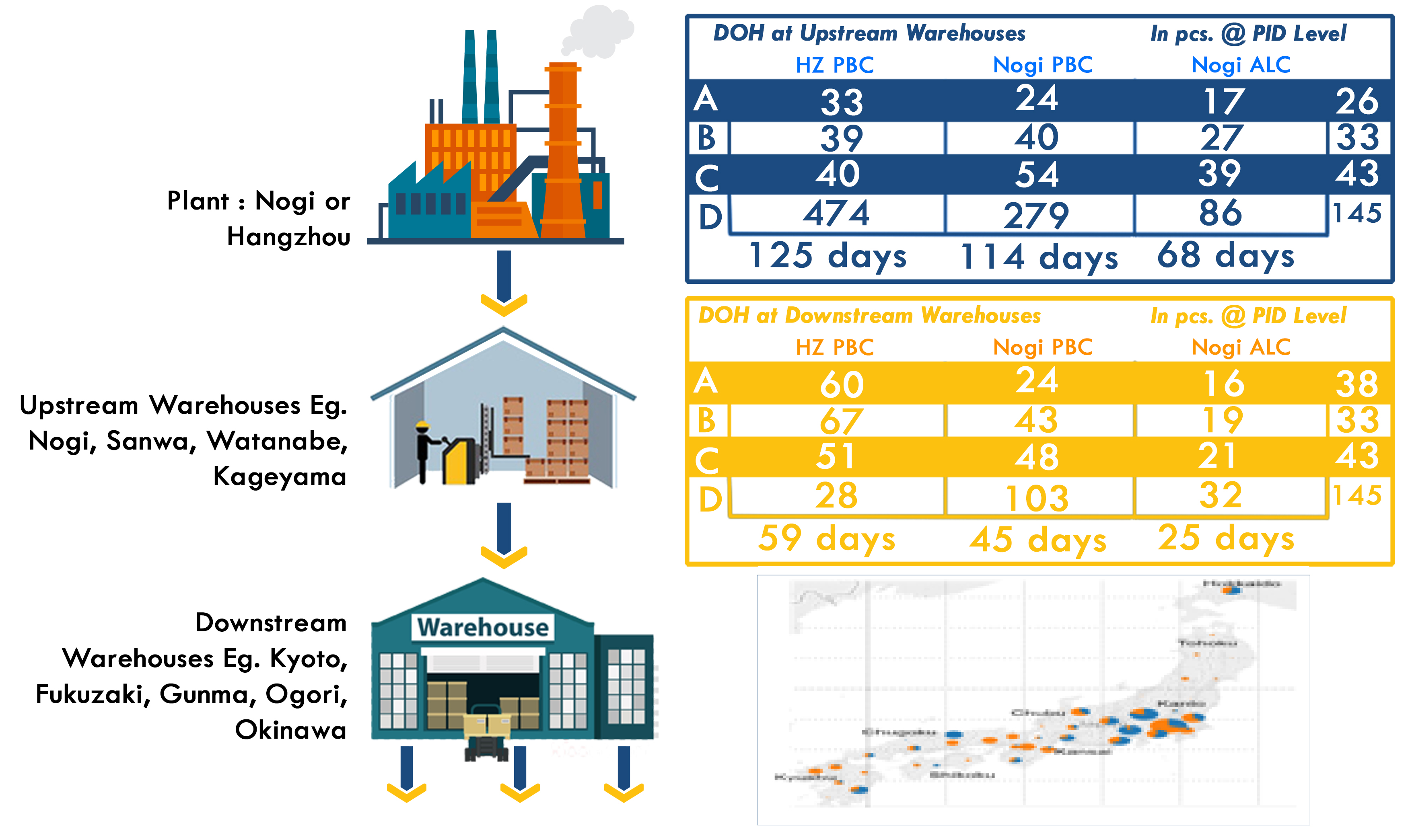Improved order fulfilment by optimally inventory deployment according to customer sales in the aftermarket sales channel
Key Business Challenges
- In North America customers preferred to buy their aftermarket needs (esp. consumables like filters, new and remanufactured parts) directly from the OEM, if available on a timely manner at competitive prices (allowing for a slight premium)
- Often the required parts (esp. consumables) were not available on a timely manner or were much more expensive compared to “knockoffs”
- Unavailability of genuine parts (& consumables) adversely impacts revenues from service /repair customers in the channel & erodes brand loyalty
Client Expectations
- Our client was looking to improve its share of the aftermarket parts without diluting its margins
- Channel demand fulfilment had to be achieved without too much more inventory
- Avoid any channel conflicts between distributors, with OEM partners and their distributors
North American customer Analysed 300+
Analytics/Consulting Project
- Customer segmentation based on industry and types of equipment (on vs. off highway, mining vs. standby power generation)
- Deeper understanding of NA competitors, customers, channel partners.
- Regression analysis to determine optimal replenishment schedules and order quantities for auto-replenishment of consumables
- Built parts consumption model for actively managed parts (incl. consumables) to project total parts requirements by customer and product segments
- Multi-echelon Inventory Optimization to determine right inventory levels (MDC vs. RDC)
- Evaluated profitability impacts of FOREX (foreign currency exchange) rate changes on imported products
Volumes 10,000+ products/quarterly
SUMPURA Delivered Outcomes
- With customer usage data analytics we helped our client to get ahead of the parts ordering process to anticipate demand for actively managed parts. For some of the consumable parts (like filters) we help setup auto-replenishment programs
- As a result of changes to inventory management the overall First-pass fill (FPF) improved from 70% to 92% without any significant increase in inventory investment.
Improved Order fulfilment 20-40%, w/ same inventory
